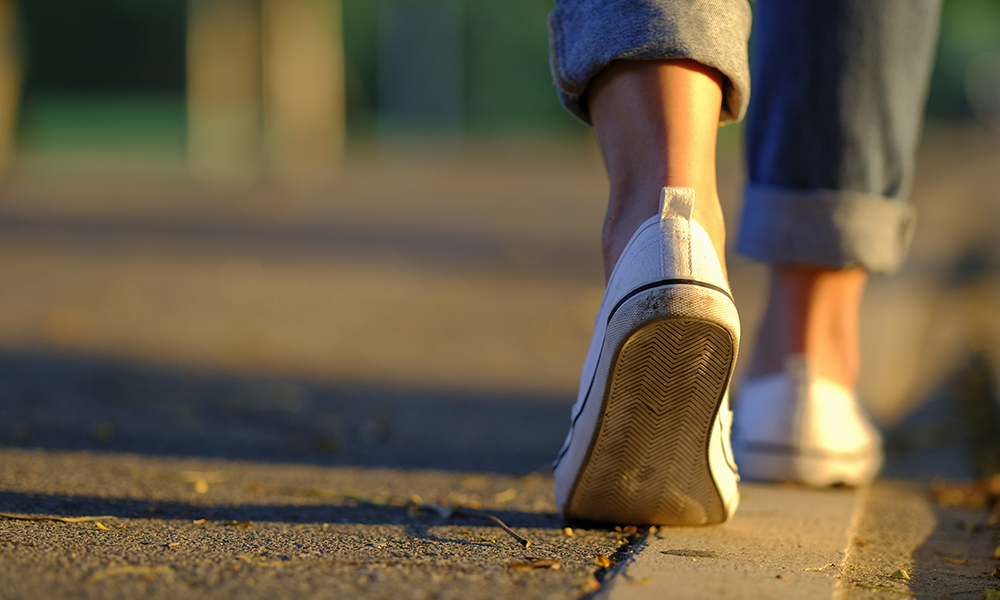 Getting back to a normal life post-COVID requires getting vaccinated and still taking precautions if you have health risks. Going for a long walk (or a brisk jog if your joints can take it) also can make a huge difference in your well-being going forward.
Getting back to a normal life post-COVID requires getting vaccinated and still taking precautions if you have health risks. Going for a long walk (or a brisk jog if your joints can take it) also can make a huge difference in your well-being going forward.
Exercise has long been known to fight disease and improve our mental state. The pandemic, though, kept many of us out of gyms, public pools and fitness classes. A study released by health publisher BMC showed that COVID-19 negatively influenced people’s general health and quality of life. It also showed people exercised less.
At the center of our health is our immune system - your body's defense system that fights viruses and disease. In summary, the immune system includes:
-
White blood cells that play various roles in fighting infection.
-
Cortisol and adrenaline hormones that modulate how white blood cells work.
-
Body temperature and blood oxygen levels that respond to infection.
Sleep, stress, diet, medications and medical history also impact how well your immune system regulates your health.
JMH Providers agree, though, that exercise like a long walk plays an essential role in your immune ecosystem and overall health. Here is how:
Walking Reduces Your Sick Days
An increase in blood flow and heart rate during a walk helps protect you from colds, flu and most other viruses. Harvard Health said a study of more than 1,000 men and women who walked at least 20 minutes a day, at least five days a week, had 43 percent fewer sick days than those who exercised once a week or less. And if they did get sick, it was for a shorter duration, and their symptoms were milder.
Walking Boosts Your Mood
It has a positive influence on your hypothalamic-pituitary-adrenal (HPA) axis, which is your central nervous response system, according to WebMD. This is good because the HPA axis is responsible for your stress response. When you exercise by walking, you calm your nerves, which can make you feel less stressed.
Walking Eases Joint Pain
Walking five to six miles a week can even prevent arthritis from forming in the first place, according to The Arthritis Foundation. The majority of joint cartilage has no direct blood supply. It gets its nutrition from the joint fluid that circulates as we move. Movement and compression from walking “squishes” the cartilage, bringing oxygen and nutrients into the area.
Walking Counters Weight-Promoting Genese
Harvard researchers looked at 32 obesity-promoting genes in over 12,000 people to determine how much these genes actually contribute to body weight. They then discovered that, among the study participants who walked briskly for about an hour a day, the effects of those genes were cut in half.
Walking Reduces Sugar Cravings
A pair of studies from the University of Exeter found that a 15-minute walk can curb cravings for chocolate and even reduce the amount of chocolate you eat in stressful situations. And the latest research confirms that walking can reduce cravings and intake of a variety of sugary snacks.
Walking is a Warrior Against Cancer
Getting recommended amounts of physical activity is linked to a lower risk for seven cancer types, according to a study from the American Cancer Society, the National Cancer Institute, and the Harvard T.H. Chan School of Public Health. Health experts have known for a long time that exercise is linked with a lower risk of several cancers, but they’ve had limited evidence about how much exercise is needed. The new study found that the equivalent of 2.5 to 5 hours of moderate-intensity activity per week (or 1.25 to 2.5 hours of vigorous activity) provided a significant benefit.
If you are interested in knowing more about the best exercise program for your health, contact the Johnson Memorial Health Wellness Services at 317.346.3866.
